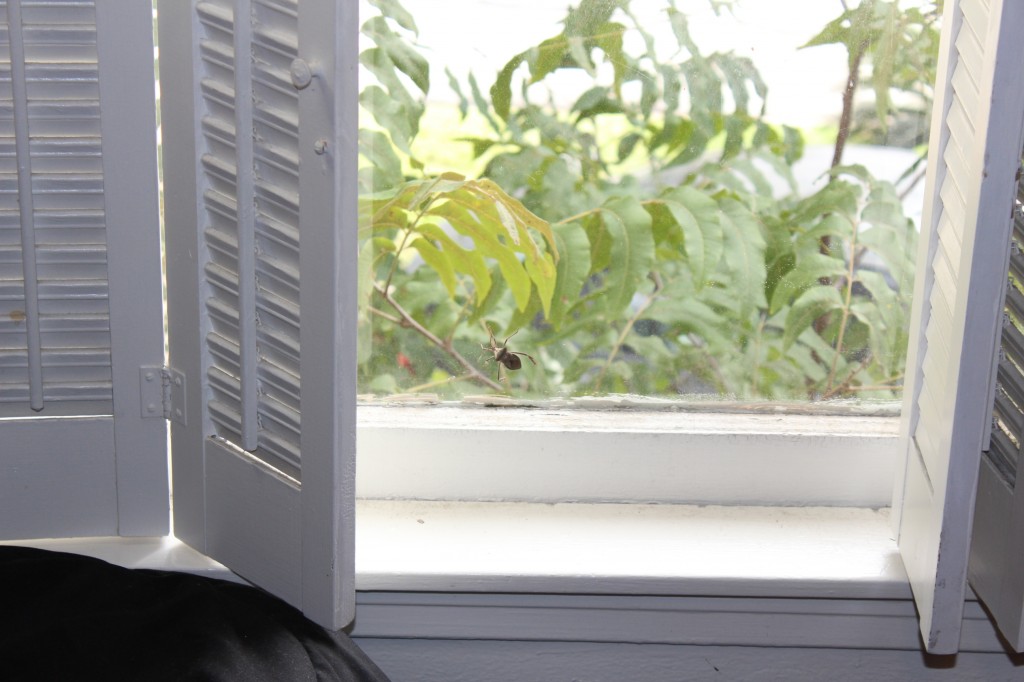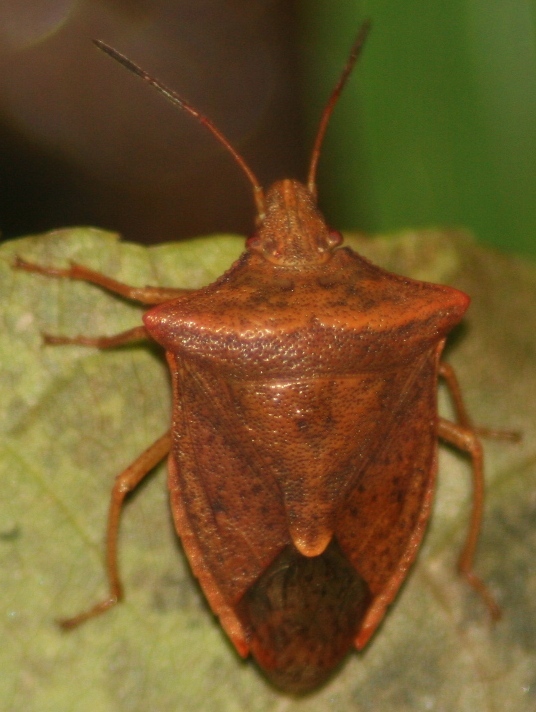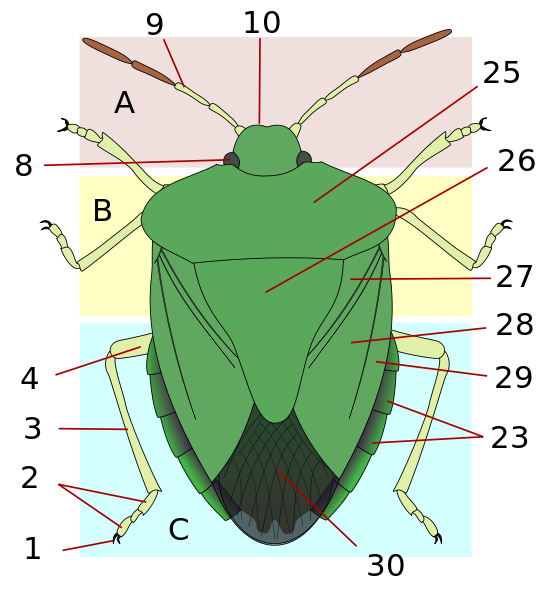Unless you live in some modern, high-tech studio apartment, chances are your home has some kind of arthropod lurking around. That creeper could be anything from a cockroach in your garbage, to a spider in the attic, or a fly on the wall. I, however, had the experience of meeting a much larger nemesis.
Allow me to set the scene. I walk into my room and plop myself onto my bed, ready to avoid life, but the second my body hits the bed, I hear a loud buzzing noise coming from beneath me. Seconds later, I’m panicking in my sheets as some winged beast from the fiery depths of hell comes flying at me. Moments later as my stomach sunk back into place, I noticed it had landed on my window, and I could see that it was some kind of bug.
Although my usual response is to run away and find someone large to crush it for me, instead, I took a surprising interest in the creature. It doesn’t seem to have any stingers, obvious chewing mouthparts, or scary coloring, so I started observing it from a comfortable distance. I figured that I’ve spent way too many hours studying insect anatomy to not get a closer look.
Using what I’ve learned about arthropods so far, I was able to perform a process of elimination to figure out what I was looking at.
The first clue was that the arthropod had six appendages, which could only mean it was an insect. The second clue was that the insect had flown at me—a sign that it had to be winged. My years of skimming Nancy Drew books, however, caught up to me as I couldn’t be sure of any of my other guesses. Luckily, I had my camera nearby so I was able to get closer, without getting nearer. I noticed that I couldn’t see its wings despite the fact that it had just flown at me. This could mean that is was an endopterygote, with what seemed to be elytra. My best guess for its morphology was that it was part of the order Coleoptera, in other words, a beetle. I had my doubts, however; although Coleoptera is the most diverse insect order, I had yet to see this distinct shield-like shape on its back.
As my last step, I used the internet to help me solve this puzzle. It turns out the monster under my bed was a stink bug. Stink bugs, as the name implies belong to the “true bug” order, or Hemiptera; this meant my initial guess of Coleoptera was incorrect. I still found this to be strange, however, considering how dense the outer layer on its winged region looked. As a matter of fact, stinkbugs, belonging to the sub-family Pentatomidae, are actually characterized by this hardened, shield-like layer. Additionally, as the name also implies, these bugs defensively release a foul smelling chemical that makes them unappealing to nearby predators. The puzzle piece I was missing here was the view of the haustellate, an anatomical trait that would’ve been a dead giveaway since beetles have mandibles.
Its—unwelcome—presence in my house is actually quite a common occurrence during winter times. It is speculated that this need for warmer shelter is the reason they were first introduced to the states, but also makes them household pests. Additionally, they tend to be pests due to their destruction of crops; because they were fairly recently imported, for a long time these bugs had no natural predators and were becoming a severe problem in the states.
While my experience may not necessarily change lives, solve scientific mysteries, or produce cures, it does demonstrate that my perspective on “bugs” has changed. Instead of simply cowering away from this tiny threat, I was able to use logic and deduction to identify and figure out whether this insect posed a threat at all. You won’t see me touching bugs any time soon, but I can now regard them as interesting and dynamic members of our world.



